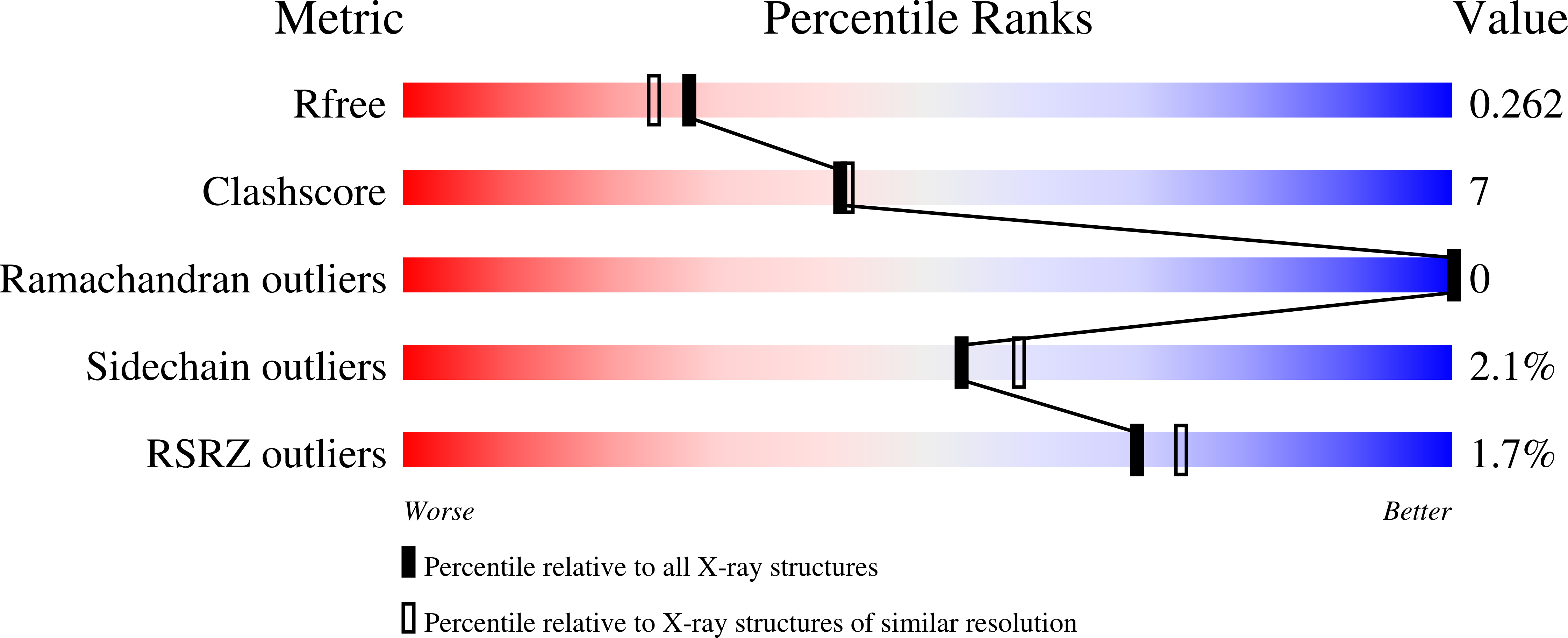Contribution of a Low-Barrier Hydrogen Bond to Catalysis is not Significant in Ketosteroid Isomerase.
Jang, D.S., Choi, G., Cha, H.J., Shin, S., Hong, B.H., Lee, H.J., Lee, H.C., Choi, K.Y.(2015) Mol Cells 38: 409
- PubMed: 25947291
- DOI: https://doi.org/10.14348/molcells.2015.2266
- Primary Citation of Related Structures:
5AI1 - PubMed Abstract:
Low-barrier hydrogen bonds (LBHBs) have been proposed to have important influences on the enormous reaction rate increases achieved by many enzymes. Δ(5)-3-ketosteroid isomerase (KSI) catalyzes the allylic isomerization of Δ(5)-3-ketosteroid to its conjugated Δ(4)-isomers at a rate that approaches the diffusion limit. Tyr14, a catalytic residue of KSI, has been hypothesized to form an LBHB with the oxyanion of a dienolate steroid intermediate generated during the catalysis. The unusual chemical shift of a proton at 16.8 ppm in the nuclear magnetic resonance spectrum has been attributed to an LBHB between Tyr14 Oη and C3-O of equilenin, an intermediate analogue, in the active site of D38N KSI. This shift in the spectrum was not observed in Y30F/Y55F/D38N and Y30F/Y55F/Y115F/D38N mutant KSIs when each mutant was complexed with equilenin, suggesting that Tyr14 could not form LBHB with the intermediate analogue in these mutant KSIs. The crystal structure of Y30F/Y55F/Y115F/D38N-equilenin complex revealed that the distance between Tyr14 Oη and C3-O of the bound steroid was within a direct hydrogen bond. The conversion of LBHB to an ordinary hydrogen bond in the mutant KSI reduced the binding affinity for the steroid inhibitors by a factor of 8.1-11. In addition, the absence of LBHB reduced the catalytic activity by only a factor of 1.7-2. These results suggest that the amount of stabilization energy of the reaction intermediate provided by LBHB is small compared with that provided by an ordinary hydrogen bond in KSI.
Organizational Affiliation:
Department of Life Sciences, Pohang University of Science and Technology, Pohang 790-784, Korea.















